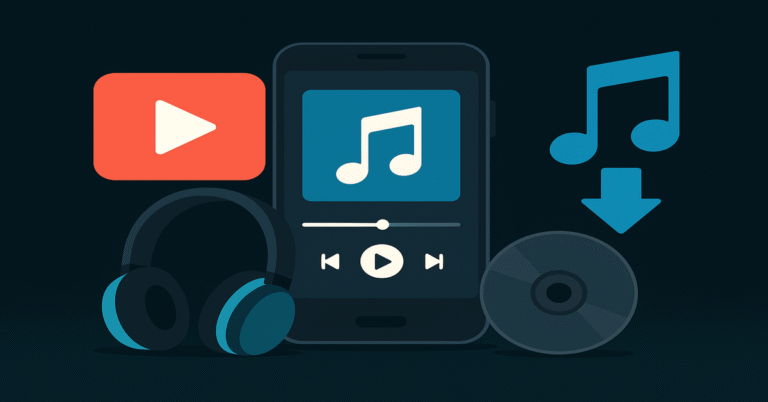
The phrase “Quick Links” is one of those interesting terms that carry dual meanings depending on context. In one world, quick links are mechanical connectors — strong steel loops with threaded closures used in climbing, sailing, construction, and safety equipment. In another world, particularly digital spaces, quick links are navigation shortcuts — hyperlinks that allow fast access to websites, documents, or applications without multiple clicks.
Despite being rooted in such different domains, both uses of the term share a common philosophy: efficiency, simplicity, and reliability. Whether holding together a climber’s harness or guiding a website user directly to an important page, quick links save time, reduce friction, and provide secure connectivity.
This article will explore the idea of quick link from every angle — mechanical, digital, industrial, and social. By examining history, design, applications, benefits, challenges, and future perspectives, we can appreciate how this simple term represents a universal principle of speed and convenience in modern life.
Understanding Mechanical Quick Links
Structure and Design
Mechanical quick link, sometimes called maillons rapides (French for “quick links”), are oval or triangular metal loops with a screw-gate closure. Unlike carabiners that use a spring gate, quick link have a threaded sleeve that screws shut, creating a stronger and more permanent connection.
Key components of a quick link include:
- Body: The main steel or alloy loop, shaped oval, delta, or pear.
- Threaded Gate: A screw mechanism that opens or closes the link.
- Load Rating: Each link is rated for maximum load-bearing capacity (measured in kilonewtons or kilograms).
Materials Used
Quick link are manufactured from:
- Carbon Steel: Provides strength at an affordable price but requires anti-corrosion coating.
- Stainless Steel: Offers durability and resistance to rust, making it ideal for marine or outdoor use.
- Aluminum Alloy: Lightweight but usually less strong, often used for non-critical connections.
Applications of Mechanical Quick Links
Table: Industrial and Recreational Uses of Quick Links
| Field | Application |
|---|---|
| Climbing | Securing ropes, attaching gear, backup safety systems |
| Sailing/Marine | Connecting chains, rigging, securing sails and anchors |
| Construction | Temporary rigging, attaching scaffolding, lifting equipment |
| Rescue Operations | Attaching harnesses, rescue ropes, and pulleys |
| Camping/Hiking | Hanging hammocks, attaching gear to backpacks, quick campsite setup |
| Industrial Safety | Connecting workers’ harnesses to lifelines, fall arrest systems |
| Everyday Use | Keychains, hanging tools, securing small equipment |
These examples show how quick link are used wherever secure but temporary connections are needed.
Advantages of Mechanical Quick Links
- Strength and Reliability: Unlike snap hooks, screw closures are less likely to open accidentally.
- Versatility: Can connect ropes, chains, straps, or harnesses.
- Portability: Compact and easy to carry.
- Durability: High resistance to wear and tear, especially stainless-steel versions.
- Cost-Effectiveness: Affordable compared to specialized connectors.
Challenges in Using Mechanical Quick Links
- Thread Damage: Over-tightening or exposure to dirt may damage the screw threads.
- Corrosion Risks: Carbon steel versions may rust if not coated.
- Time to Close: Takes longer to screw shut compared to snap-gate carabiners.
- Load Misuse: Using quick link below rated strength can cause accidents.
- Counterfeits: Low-quality copies pose safety risks in critical uses.
Digital Quick Links: A Navigation Shortcut
In digital contexts, “quick link” refer to shortcuts that direct users to important pages or content instantly. They are widely used in websites, apps, documents, and organizational systems to improve navigation.
Common Forms of Digital Quick Links
- Website Menus: “Quick Link” sections often appear in website footers.
- Mobile Apps: Buttons like “Pay Now” or “Profile” act as quick access points.
- Intranets/Workplace Portals: Employees use quick link to reach HR systems, payroll, or reports.
- Documents/Spreadsheets: Hyperlinked indexes help jump to relevant sections.
- Educational Platforms: Links to courses, modules, and assignments.
Applications of Digital Quick Links
Table: Practical Use Cases of Digital Quick Links
| Domain | Example Applications |
|---|---|
| Corporate Websites | Directing users to FAQs, policies, services |
| E-Commerce | Quick access to cart, shipping info, or discounts |
| Education | Links to assignments, lecture notes, and exam schedules |
| Healthcare | Direct links to patient records, appointment booking, or emergency guidelines |
| Government Portals | Fast access to tax filing, applications, citizen services |
| Finance | Quick access to statements, transfer pages, or loan calculators |
Benefits of Digital Quick Links
- Efficiency: Saves users from navigating through multiple menus.
- User Experience: Enhances satisfaction by providing easy access.
- Accessibility: Helps less tech-savvy users reach essential services quickly.
- Engagement: Increases time spent on websites by reducing frustration.
- Consistency: Standardized quick link provide familiar navigation across platforms.
Challenges of Digital Quick Links
- Overcrowding: Too many quick link can confuse users.
- Broken Links: Outdated or dead quick link frustrate users.
- Security: Improperly managed quick link may expose sensitive data.
- Maintenance: Requires constant updates to remain useful.
- Mobile Design Issues: Poor placement can reduce usability on small screens.
Comparing Mechanical and Digital Quick Links
Though different in appearance, mechanical and digital quick links share underlying principles.
Table: Mechanical vs Digital Quick Links
| Aspect | Mechanical Quick Links | Digital Quick Links |
|---|---|---|
| Function | Connects physical objects securely | Connects users to digital destinations quickly |
| Material/Medium | Steel, alloy, aluminum | Hypertext, coding, digital platforms |
| Key Benefit | Strength, reliability | Efficiency, accessibility |
| Common Users | Climbers, workers, sailors, rescuers | Website visitors, app users, employees, students |
| Risks | Corrosion, misuse, thread damage | Broken links, security flaws, poor navigation design |
This comparison highlights how quick links always embody secure, fast connection — physical or digital.
The Future of Quick Links
Mechanical Quick Links
- Smart Alloys: Self-healing materials for longer durability.
- Lighter Designs: Advanced composites replacing heavy metals.
- Built-In Sensors: Links with load sensors for climbing and industry safety.
Digital Quick Links
- AI Integration: Predictive quick link based on user behavior.
- Voice Navigation: Quick link triggered by voice commands.
- Cross-Platform Consistency: Unified quick link across devices and apps.
- Secure Blockchain Links: Tamper-proof quick link in government or finance portals.
The next evolution of quick links will focus on intelligence, personalization, and enhanced safety.
Conclusion
Quick links, whether metal connectors or digital shortcuts, are a testament to humanity’s pursuit of efficiency and safety. In climbing, construction, and rescue, mechanical quick link ensure lives are protected through strong connections. In digital systems, quick link empower users by saving time, simplifying navigation, and enhancing accessibility.
By studying quick link in both physical and virtual contexts, we recognize a deeper truth: connection matters. Whether between ropes or between websites, quick link create bridges of reliability and speed. Their future lies in becoming smarter, safer, and more user-centric, ensuring they remain relevant in industries, technology, and everyday life.
FAQs
Q1. What is a quick link in climbing?
It is a screw-gate connector used to secure ropes, harnesses, or equipment with high reliability.
Q2. What are quick links on websites?
They are navigation shortcuts that provide direct access to important sections or pages without extra clicks.
Q3. How are quick links different from carabiners?
Quick link use a threaded screw closure, while carabiners use a spring-loaded gate, making quick link more secure.
Q4. Why are digital quick link important for websites?
They enhance user experience, improve accessibility, and ensure users can reach critical content instantly.
Q5. What is the future of quick link?
Mechanical versions may gain sensors and smart alloys, while digital versions may adopt AI personalization and blockchain security.






